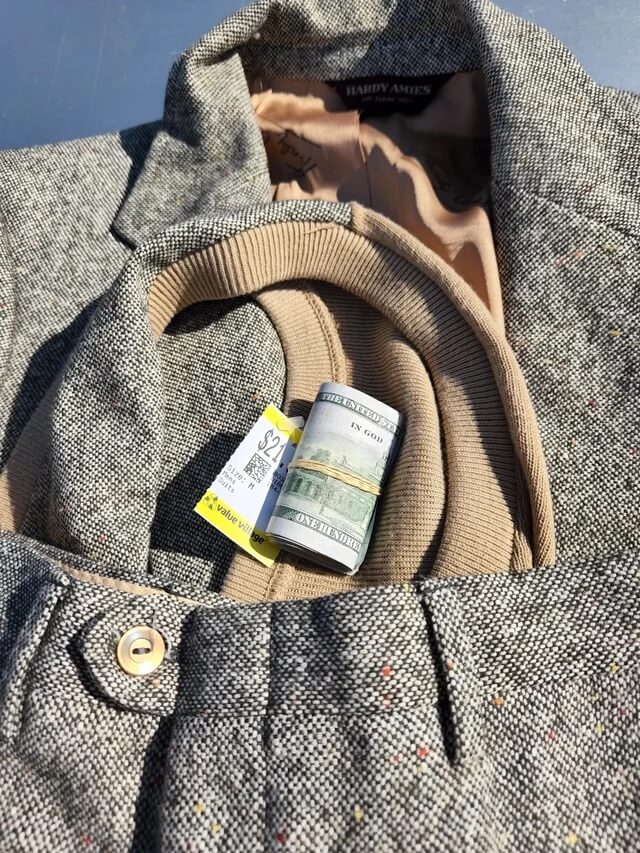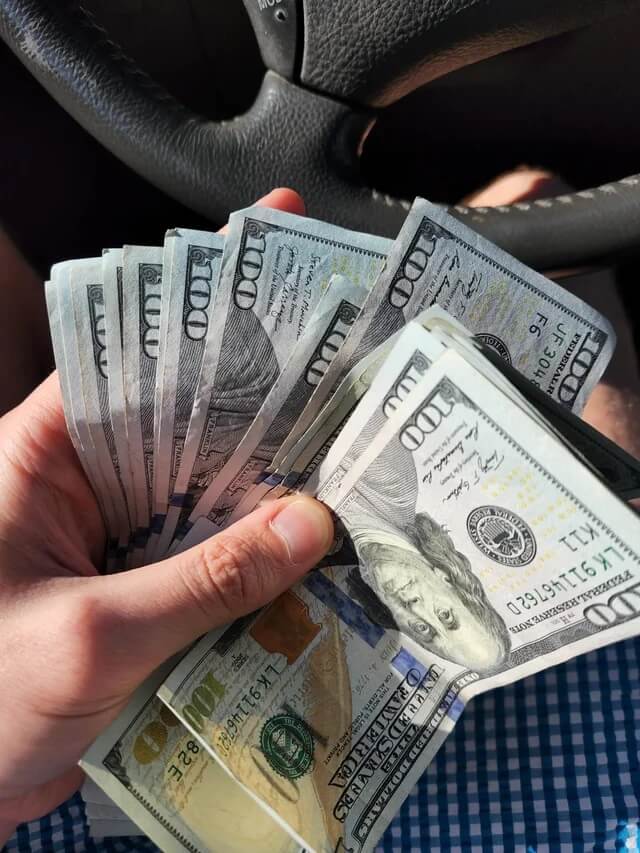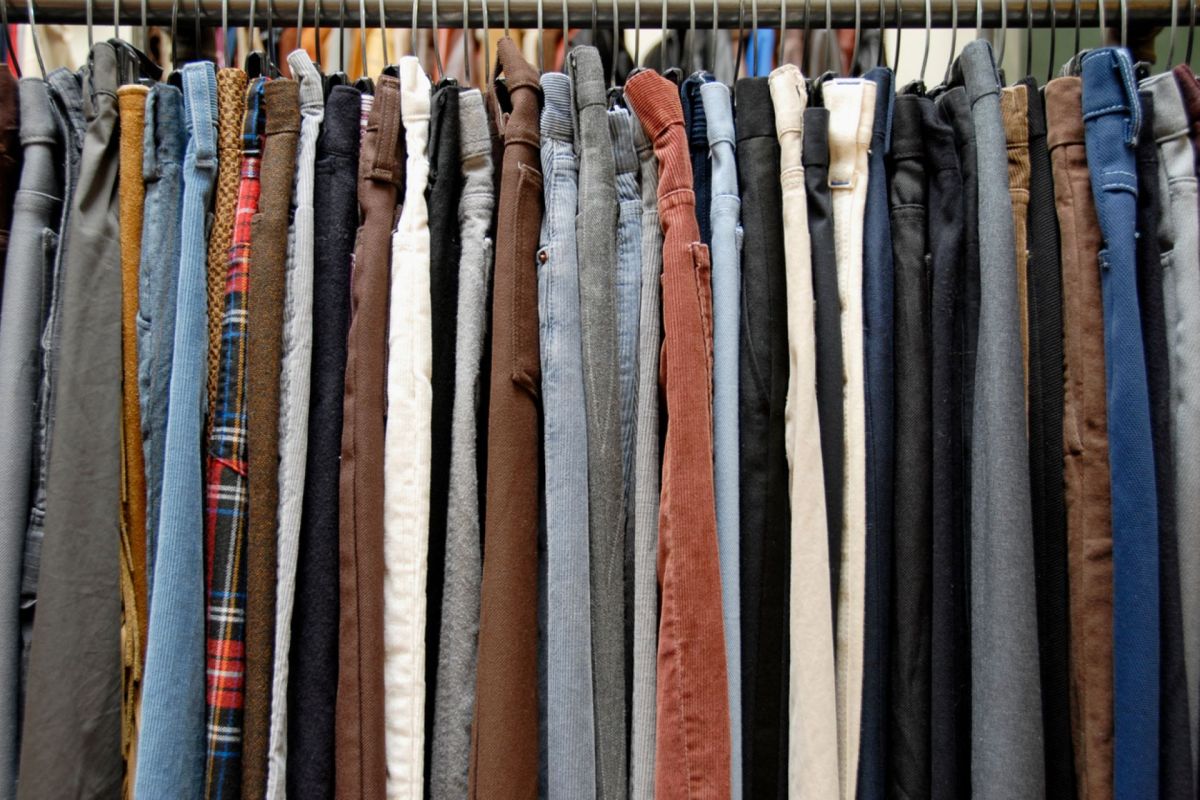Plenty of people have stories about how little money they spent on items bought at a thrift store, but few have stories about how much money they made on them at the time of purchase.
You may wonder how it's possible to make money on something purchased, and one Redditor is happy to tell you.
In a post on the r/ThriftStoreHauls forum, a Redditor shared a picture of a thrifted suit, and sitting on top of it was a roll of cash.
🗣️ What's your primary motivation in shopping at thrift stores?
🔘 Cheaper clothes 🤑
🔘 Trendier items 😎
🔘 Reduced environmental impact 🌎
🔘 I don't thrift 🚫
🗳️ Click your choice to see results and speak your mind
"I've found interesting things in thrifted suit pockets before, but never $2000 in cash," the poster wrote above the photo. "I can barely believe it," they said in the comments.


The Redditor clarified that they spend a lot of time in thrift stores "thrifting professionally as a side hustle," so they have experience finding hidden money, but never quite like this huge score. "This is the rarest of the rare," they commented.
"Note to self... Shop more at goodwill," quipped one commenter.
Many thrifters would agree with this sentiment, like this Redditor who may not have found thousands of dollars in their thrifted suit jacket but did save close to $1,000 or this savvy shopper who saved over $3,000 on a couture coat.
Money savings — or finds — aside, which can be up to $1,700 a year on average, thrifting also brings a wealth of environmental benefits. The number one source of textile waste in the United States is thrown-away clothing, and over 100 million tons of textile waste gets sent to landfills annually.
The fashion industry produces 2-8% of global carbon air pollution, and fast fashion has recently come under scrutiny because of it, so much so that 93% of U.S. consumers say they are either willing to buy secondhand or already do so.
After stories like the one the OP shared here, at least some of the remaining 7% might be convinced.
The comment section was filled with well-wishes for the poster and a litany of stories of personal finds, though none were as great as a roll of cash.
One comment, however, took a different approach and offered a possible explanation for why the wad was there in the first place.
"Also semi-professional thrift-store vulture here," they said. "You don't see it as much anymore, but this sort of thing used to be surprisingly common as the WWII generation died off. They grew up during the Depression with a very justifiable distrust of banks. Usually the money got stuck into Bibles, and then nobody wanted the old Bible so off to the thrift store it went."
Whether the suit in question was Depression-era or not, there was clearly no depression for the purchaser, just a win for the thrifter and the environment.
Join our free newsletter for easy tips to save more, waste less, and help yourself while helping the planet.









